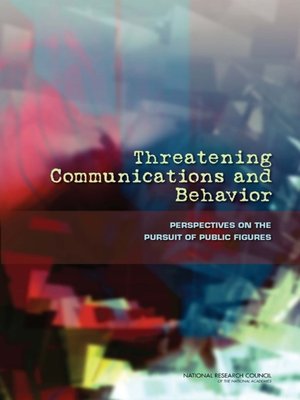Threatening Communications and Behavior
ebook ∣ Perspectives on the Pursuit of Public Figures
By National Research Council

Sign up to save your library
With an OverDrive account, you can save your favorite libraries for at-a-glance information about availability. Find out more about OverDrive accounts.
Find this title in Libby, the library reading app by OverDrive.



Search for a digital library with this title
Title found at these libraries:
| Library Name | Distance |
|---|---|
| Loading... |
Today's world of rapid social, technological, and behavioral change provides new opportunities for communications with few limitations of time and space. Through these communications, people leave behind an ever-growing collection of traces of their daily activities, including digital footprints provided by text, voice, and other modes of communication. Meanwhile, new techniques for aggregating and evaluating diverse and multimodal information sources are available to security services that must reliably identify communications indicating a high likelihood of future violence.
In the context of this changed and changing world of communications and behavior, the Board on Behavioral, Cognitive, and Sensory Sciences of the National Research Council presents this volume of three papers as one portion of the vast subject of threatening communications and behavior. The papers review the behavioral and social sciences research on the likelihood that someone who engages in abnormal and/or threatening communications will actually then try to do harm. The focus is on how the scientific knowledge can inform and advance future research on threat assessments, in part by considering the approaches and techniques used to analyze communications and behavior in the dynamic context of today's world.
The papers in the collection were written within the context of protecting high-profile public figures from potential attach or harm. The research, however, is broadly applicable to U.S. national security including potential applications for analysis of communications from leaders of hostile nations and public threats from terrorist groups. This work highlights the complex psychology of threatening communications and behavior, and it offers knowledge and perspectives from multiple domains that contribute to a deeper understanding of the value of communications in predicting and preventing violent behaviors.







